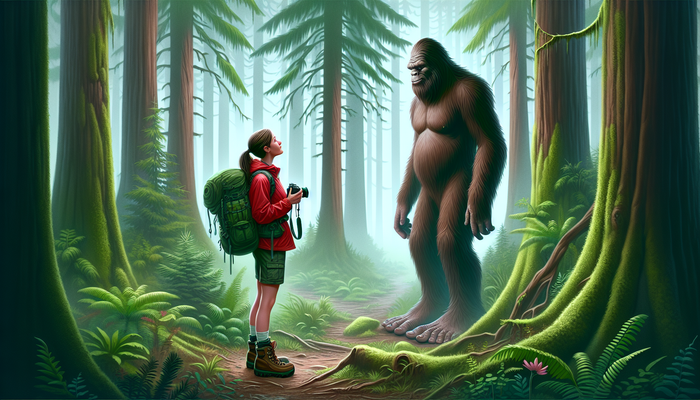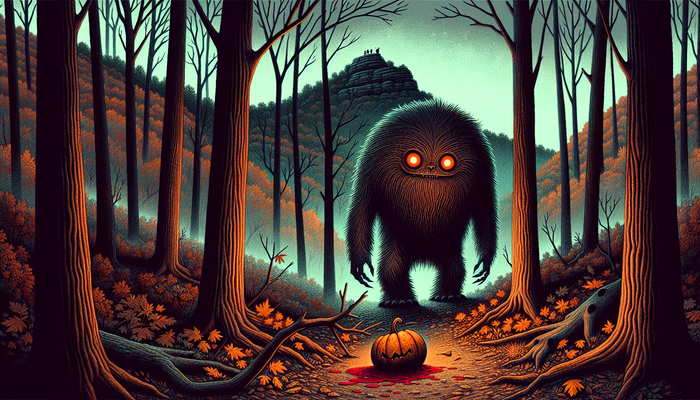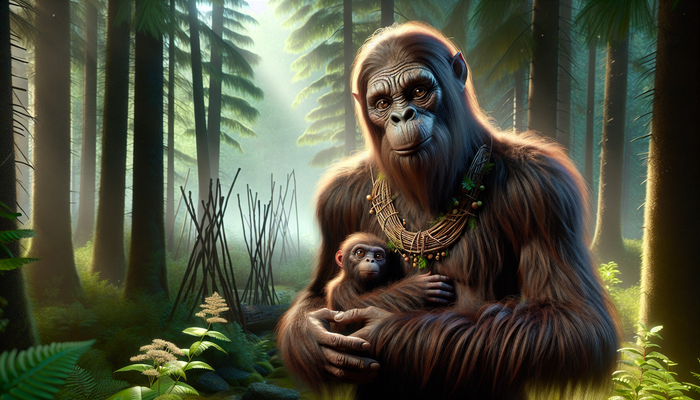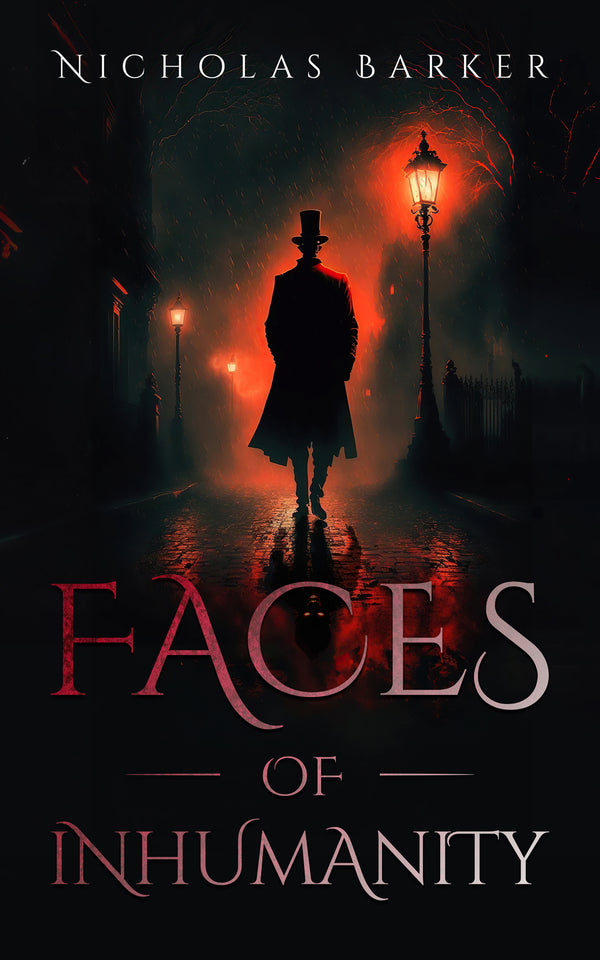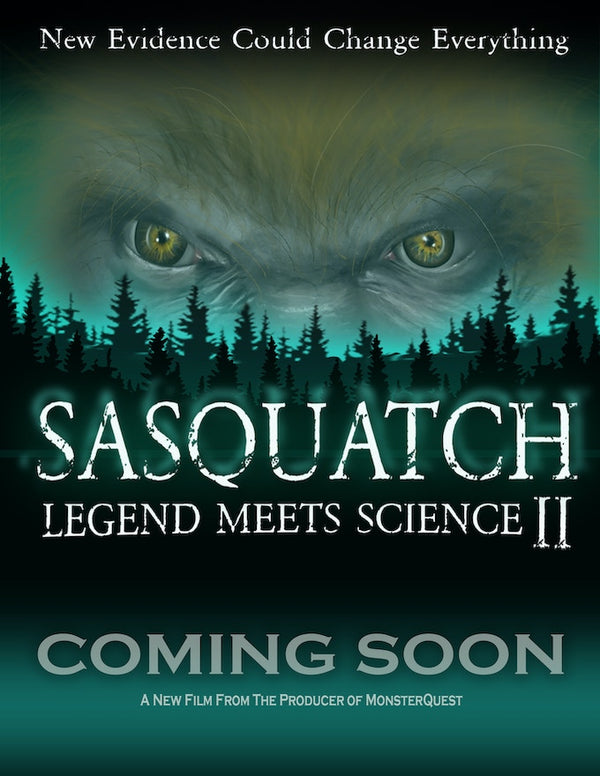Massachusetts Cryptids: From the Dover Demon to Legendary Local Monsters
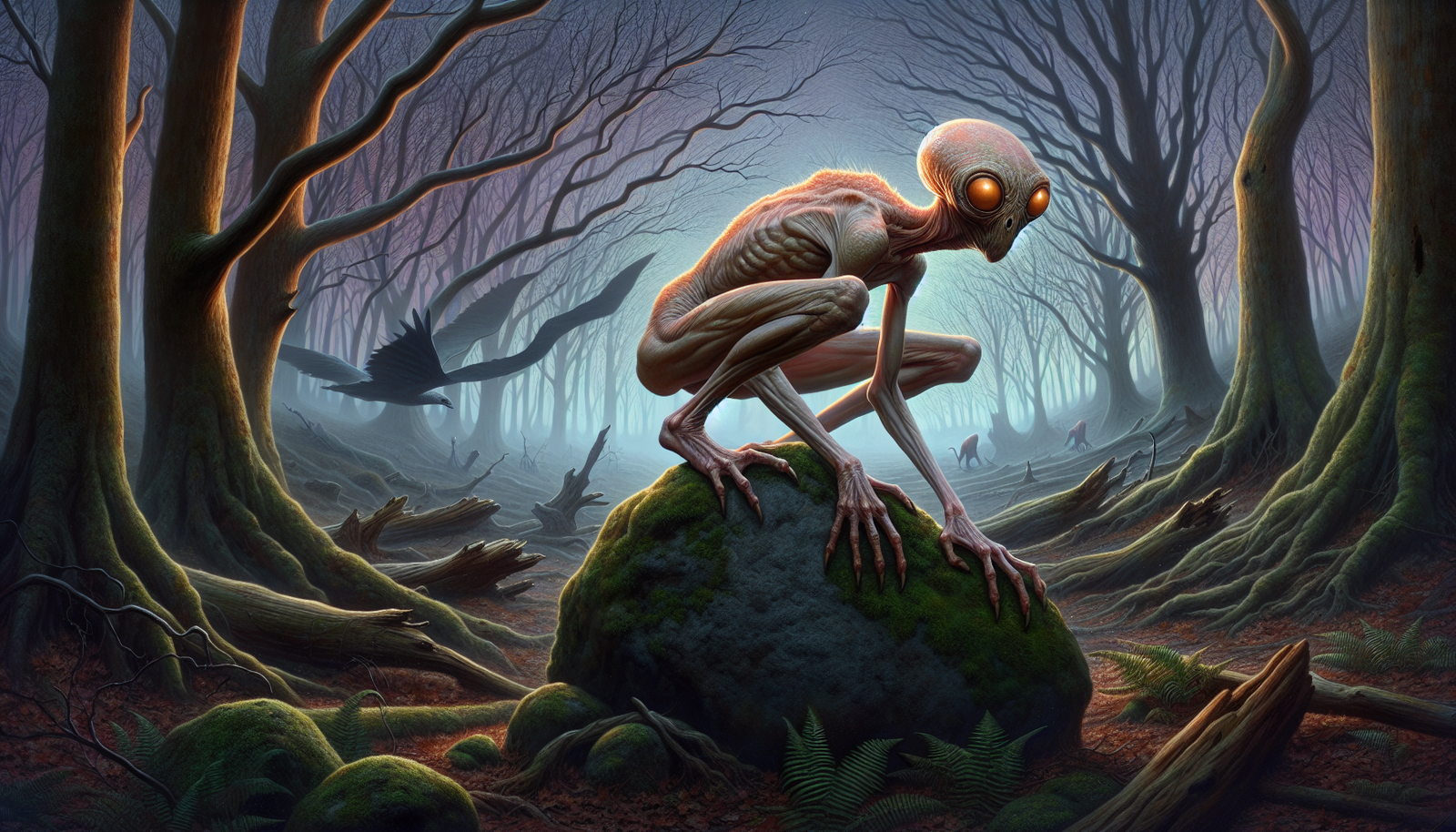
By Oliver Bennett, Bigfoot Researcher and Teacher
Beneath the tranquil surface of Massachusetts, a hidden world of mystery and intrigue beckons to those who dare to explore the unknown. As a researcher and writer fascinated by the unexplained, I have long been drawn to the rich tapestry of cryptid encounters woven throughout the Bay State's history. From the bizarre Dover Demon to the elusive Bigfoot, Massachusetts boasts an astonishing array of legendary creatures that continue to captivate the imaginations of locals and visitors alike.
My quest to unravel the enigmatic realm of Massachusetts cryptids has led me down a winding path, where folklore and fact intertwine in a captivating dance. Through meticulous research and countless interviews with eyewitnesses, cryptozoologists, and local historians, I have endeavored to piece together a comprehensive portrait of these mysterious beings and the enduring impact they have had on the state's cultural landscape.
The Dover Demon: A Diminutive Enigma
Perhaps no Massachusetts cryptid has captured the public's imagination quite like the Dover Demon. This small, humanoid creature first burst onto the scene in April 1977, when a series of bizarre sightings in the town of Dover sent shockwaves through the community.
The initial encounter occurred on the evening of April 21, when 17-year-old Bill Bartlett spotted a strange creature while driving along Farm Street with two friends. Bartlett described the being as having a large, watermelon-shaped head, glowing orange eyes, and spindly limbs. He managed to sketch a detailed drawing of the creature, which he later swore on a stack of Bibles was an accurate representation of what he had seen.
In the following days, two more teenagers, John Baxter and Abby Brabham, reported similar sightings in the same area. Baxter encountered the creature while walking home late at night, describing it as having a "figure-eight-shaped" head and moving with an eerie, almost mechanical gait. Brabham, who saw the creature from a car on Springdale Avenue, noted its hairless, sandpaper-like skin and illuminated green eyes.
The Dover Demon case quickly caught the attention of renowned cryptozoologist Loren Coleman, who launched an in-depth investigation into the sightings. Coleman interviewed the eyewitnesses, collected their sketches, and scoured the area for any additional clues. While he was unable to definitively identify the creature, his investigation lent credence to the sincerity of the teenagers' accounts and helped to cement the Dover Demon's place in cryptozoological lore.
Theories about the Dover Demon's origins have run the gamut from the mundane to the otherworldly. Some have suggested that it may have been an escaped exotic pet, such as a monkey or a large bird, that had been misidentified under the cover of darkness. Others have proposed more fantastical explanations, speculating that the creature could be an extraterrestrial being or an interdimensional entity that had somehow crossed over into our world.
Regardless of its true nature, the Dover Demon has left an indelible mark on Massachusetts' cryptid landscape. Its enduring mystery and the vivid accounts of those who claim to have seen it continue to inspire curiosity and wonder, serving as a reminder that there may be more to our world than meets the eye.
Bigfoot: A Hairy Enigma in the Bay State
While Bigfoot is often associated with the dense forests of the Pacific Northwest, this legendary man-ape has also been spotted in the wilds of Massachusetts. Sightings of large, hairy, bipedal creatures have been reported in various locations throughout the state, including the Bridgewater Triangle, Hockomock Swamp, and the Berkshire Mountains.
Eyewitnesses describe the Massachusetts Bigfoot as a towering, ape-like being, standing between 6 and 8 feet tall and covered in dark, shaggy hair. Many have reported hearing strange vocalizations, such as deep, guttural growls or high-pitched screams, emanating from the forests where the creature is said to roam. Some have even claimed to have caught a whiff of a powerful, musky odor that lingers in the air long after the Bigfoot has passed by.
One of the most compelling pieces of evidence for the existence of Bigfoot in Massachusetts comes from the Bridgewater Triangle, a 200-square-mile area in the southeastern part of the state known for its high concentration of paranormal activity. In 2010, a hiker in the Triangle managed to capture a few seconds of shaky video footage depicting a large, dark, bipedal figure moving through the dense underbrush. While the video is too blurry to be considered definitive proof, it has nonetheless fueled speculation about the presence of Bigfoot in the region.
Theories about the origins of the Massachusetts Bigfoot are as varied as the sightings themselves. Some researchers have suggested that these creatures could be relict populations of extinct apes, such as Gigantopithecus, that have somehow managed to survive in the remote corners of the state. Others have proposed more unconventional explanations, speculating that Bigfoot may be an interdimensional being or even a visitor from an alien world.
Despite the lack of concrete evidence, the legend of the Massachusetts Bigfoot continues to thrive, drawing curious investigators and adventurers to the state's forests in search of this elusive creature. The ongoing sightings and investigations serve as a testament to the enduring power of the unknown and the human fascination with the mysteries that lie just beyond the edges of our understanding.
Thunderbirds: Winged Wonders of Native Lore
High above the treetops of Massachusetts, another cryptid is said to soar: the mighty Thunderbird. These giant, prehistoric-looking birds have been spotted in various locations throughout the state, particularly in the Bridgewater Triangle and the Hockomock Swamp.
Eyewitnesses describe the Thunderbirds as having wingspans of up to 12 feet or more, with powerful, eagle-like bodies and piercing, intelligent eyes. Some have even claimed to have heard the creatures emit bone-chilling screams that echo through the forests, sending shivers down the spines of all who hear them.
The legend of the Thunderbird is deeply rooted in Native American folklore, particularly among the Wampanoag and other Algonquin-speaking peoples who once called Massachusetts home. In these ancient tales, the Thunderbirds are depicted as powerful, almost god-like beings, capable of summoning storms and wielding the power of the wind and rain. They were seen as protectors and guides, watching over the people and the land from their lofty perches in the sky.
Some cryptozoologists have speculated that the Thunderbirds of Massachusetts may be surviving members of long-extinct species, such as the pterosaurs or the teratorns. These massive, flying reptiles and birds, respectively, once soared over the prehistoric landscapes of North America, and their descriptions bear a striking resemblance to the Thunderbirds of Native American lore.
One of the most notable Thunderbird sightings in Massachusetts occurred in 1971, in the town of Easton. A police officer named Thomas Downy was driving along a lonely stretch of road near the Hockomock Swamp when he encountered a massive, winged creature with a wingspan of over 8 feet. Downy described the creature as having a "pterodactyl-like" appearance, with a long, pointed beak and piercing, intelligent eyes. The sighting left a lasting impression on the officer and has since become a cornerstone of Thunderbird lore in the region.
As with many cryptids, the true nature of the Massachusetts Thunderbirds remains a mystery. Some believe that they may be undiscovered species of giant birds, while others see them as remnants of a bygone era, somehow surviving in the remote corners of the state. Regardless of their origins, the Thunderbirds continue to capture the imaginations of those who hear their tales, serving as a reminder of the majesty and mystery that still exists in the natural world.
The Bridgewater Triangle: A Nexus of High Strangeness
In the southeastern corner of Massachusetts lies a region known as the Bridgewater Triangle, a 200-square-mile area that has long been associated with bizarre creatures, unexplained phenomena, and paranormal activity. This mysterious landscape, which includes the towns of Abington, Freetown, and Rehoboth, has been the site of countless cryptid sightings and strange occurrences, earning it a reputation as a nexus of high strangeness.
At the heart of the Bridgewater Triangle lies the Hockomock Swamp, a vast, primordial wetland that the Wampanoag people once called "the place where spirits dwell." This eerie, mist-shrouded landscape is said to be a focal point for supernatural activity, with reports of ghostly apparitions, UFO sightings, and encounters with bizarre creatures dating back centuries.
Among the many cryptids said to inhabit the Bridgewater Triangle are Bigfoot, Thunderbirds, and the small, troll-like beings known as Pukwudgies. Sightings of these creatures are remarkably consistent, with eyewitnesses describing similar features and behaviors across multiple encounters.
Some researchers have suggested that the concentration of cryptid activity in the Bridgewater Triangle may be due to the region's unique geological and electromagnetic properties. The area is rich in granite and quartz, which some believe may act as natural conductors for paranormal energy. Others have proposed that the Triangle may be a sort of "window area" or portal, allowing beings from other dimensions or realities to cross over into our world.
Native American legends also speak of the Bridgewater Triangle as a place of great spiritual significance, where the veil between the physical and the supernatural is thin. The Wampanoag people believed that the Hockomock Swamp was a gathering place for the spirits of the dead, and that those who ventured too deep into its murky depths risked encountering malevolent entities.
Today, the Bridgewater Triangle continues to draw investigators, curiosity-seekers, and adventurers from around the world, all hoping to catch a glimpse of the strange and the unexplained. While the true nature of the cryptids and phenomena associated with the Triangle remains a mystery, the enduring allure of this enigmatic landscape serves as a testament to the power of the unknown and the human fascination with the mysteries that lie just beyond the veil of everyday reality.
Pukwudgies: Impish Tricksters of the Forests
Among the many cryptids said to inhabit the forests and swamps of Massachusetts, few are as deeply rooted in Native American folklore as the Pukwudgies. These small, troll-like beings are described as having gray skin, large ears, and mischievous, often malevolent dispositions.
According to Wampanoag legend, the Pukwudgies were once friendly to humans, but their relationship soured over time. The creatures became resentful of the attention and respect given to the Wampanoag people by the creator god Maushop, and they began to use their magical powers to play tricks and cause harm.
Pukwudgies are said to possess a range of supernatural abilities, including the power to disappear and reappear at will, to shape-shift into other forms, and to lure humans to their doom with enchanting music or lights. Some legends even suggest that the Pukwudgies can wield powerful magic, such as the ability to curse those who offend them or to control the forces of nature.
Sightings of Pukwudgies have been reported throughout Massachusetts, particularly in the Bridgewater Triangle and the Freetown-Fall River State Forest. Eyewitnesses describe the creatures as standing between 2 and 3 feet tall, with disproportionately large heads and glowing, mischievous eyes. Some have even claimed to have been chased or attacked by Pukwudgies, with the creatures using their sharp claws and teeth to inflict harm.
While some dismiss the Pukwudgies as mere folklore or superstition, others believe that these enigmatic beings may be a remnant of an ancient, long-forgotten race that once inhabited the forests of Massachusetts. Some researchers have even suggested that the Pukwudgies may be related to other diminutive humanoids reported around the world, such as the fairies of European folklore or the Menehune of Hawaii.
Regardless of their true nature, the Pukwudgies have become an integral part of Massachusetts' rich tapestry of cryptid lore. Their enduring presence in the stories and legends of the region serves as a reminder of the deep, abiding connection between the land, its people, and the mysterious beings that are said to inhabit the shadows just beyond the reach of human understanding.
The Gloucester Sea Serpent: A Maritime Mystery
The coastal waters of Massachusetts have long been a source of mystery and intrigue, with tales of strange, serpentine creatures lurking beneath the waves. Perhaps the most famous of these aquatic cryptids is the Gloucester Sea Serpent, a massive, snake-like beast that was reportedly sighted by hundreds of witnesses in the early 19th century.
The first recorded sightings of the Gloucester Sea Serpent occurred in 1817, when a group of fishermen reported seeing a enormous, serpentine creature swimming in the waters off the coast of Cape Ann. The beast was described as being over 100 feet long, with a horse-like head, a series of humps along its back, and a powerful, writhing tail.
Over the next two years, sightings of the creature continued to pour in from across the region. Eyewitnesses included sailors, fishermen, and even respected members of the community, such as a former member of George Washington's staff. The sightings were so numerous and consistent that they attracted the attention of the Linnaean Society of New England, which launched an investigation into the matter.
Despite the best efforts of the Society and other researchers, the true nature of the Gloucester Sea Serpent remained a mystery. Some speculated that the creature may have been a previously unknown species of marine reptile, such as a plesiosaur or a mosasaur, that had somehow survived into the modern era. Others suggested that it may have been a misidentified known animal, such as an oarfish or a giant squid.
Regardless of its true identity, the Gloucester Sea Serpent quickly became a sensation, capturing the imaginations of people across the country and around the world. The creature was featured in newspaper articles, books, and even works of art, cementing its place in the annals of cryptozoological history.
From Bigfoot to UFOs: Hangar 1 Publishing Has You Covered!
Explore Untold Stories: Venture into the world of UFOs, cryptids, Bigfoot, and beyond. Every story is a journey into the extraordinary.
Immersive Book Technology: Experience real videos, sights, and sounds within our books. Its not just reading; its an adventure.


